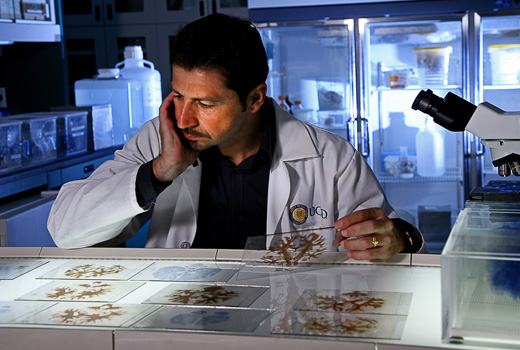
Jacopo Annese examines some of the final glass slides from a brain dissection. The average human brain produces 2,600 to 3,000 such slides.
Mind Mappers
Digital Brain Library sets out to dissect brains of 1,000 donors
Scott LaFee | Feb. 14, 2011
For obvious reasons, humans are utterly fascinated with what makes us, well, human.
Put another way, our brains want to know more about themselves. But studying this jellied, three-pound organ perched atop our spine has historically been problematic. How do you compare what has been learned about human behavior and disease with the actual organ, which clearly can’t be examined in direct, microscopic detail while still in use by its owner?
The Digital Brain Library at the University of California, San Diego School of Medicine is an unprecedented attempt to resolve this impasse. New neuroimaging technologies have been developed to begin to address some of the questions and conundrums that have tantalized us—neuroscientists, doctors, and layman alike—for centuries, advances that will help push the neurosciences deep into the century.
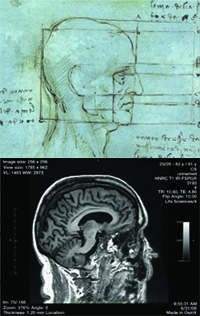
The history of brain imaging dates back centuries, from simple drawings to MRI scans. The Digital Brain Library takes the process further, producing interactive images that can be studied and manipulated online anywhere in the world.
The effort actually began a few years ago when The Brain Observatory at UC San Diego was charged with the examination of the brain of Henry G. Molaison, an amnesic who famously could not hold any memory longer than twenty seconds. In medical literature, he was known as Patient H.M. Molaison died in 2008, endowing his brain to The Brain Observatory, headed by neuroanatomist Jacopo Annese. “It’s the most important brain in the modern history of medicine,” Annese said.
In 2009, after meticulous, painstaking preparation, Annese and his team dissected and digitized H.M.’s brain. The procedure was followed by hundreds of thousands of people via the Internet and garnered attention and headlines around the world.
But H.M. was just the beginning.
Researchers are now poised to dramatically expand the scope and the goals of the UCSD Digital Brain Library. The challenge over the next decade is to collect the brains and personal medical profiles of up to 1,000 donors. The story of H.M. was singularly fascinating; the next thousand are likely to produce even more intriguing and profound revelations, according to Annese. “What do our brains share in common? What makes each of us unique?”
The motivation for such an ambitious project is straight-forward. With a large enough catalog of brains preserved as virtual models, scientists can explore and visualize them in novel ways that may provide glimpses into the governing principles of brain design and help scientists decipher the personal patterns of maturation and disease. A byproduct of this research will be 1,000 personal neurological portraits: immense digital canvases that map precisely some of the biological complexities of individual (and social) behaviors.
Currently, the best way to peer inside a living human brain is through an MRI, which is a powerful diagnostic tool but cannot reveal the fine structural detail underlying brain function and neurological conditions. To do that requires the examination of the brain ex vivo; an undertaking that at a large scale presents obvious challenges.
The Digital Brain Library at UC San Diego has developed new protocols that combine the advantages and benefits of both of these approaches, and then transcends them.
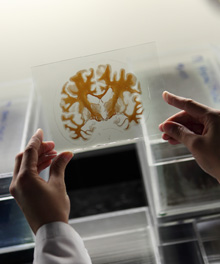
The process that results in producing a single, digitized glass slide is laborious and exacting.
Traditional brain banks consist of collected specimens labeled with specific diseases. To study these brains, partial samples are excised and distributed to inquiring scientists, a “destructive” process that is economical and efficient but singular. Once a specimen is processed, it is unsuitable for any retrospective examination and collaborative investigation. More importantly, it becomes impossible to reconstruct the anatomical or pathological identity of that unique, irreplaceable brain.
Using innovative technologies, researchers in The Digital Brain Library preserve each brain in one piece, transforming it into an unabridged collection of sequential images that can be visualized at different levels of resolution, reassembled into three-dimensional models, or inspected with virtual dissection tools – all without compromising the integrity of the original dataset. Moreover, these images are corroborated by additional medical, neuropsychological, and even biographical data.
Using devices designed solely for this project, each whole brain is prepared and then precisely cut into a series of slices, each about the thickness of a human hair. (The average-sized brain produces 2,600 to 3,000 slices.)
Some of the material is cryogenically preserved and protected for future, still-unimagined questions and experiments, while many very thin slices are cut at regular intervals, stained to reveal different features, and mounted onto postcard-sized glass slides. These slides are digitized, which allows them to be accessed and observed by countless researchers simultaneously, anywhere in the world, over and over again.
With microscope scanners designed at The Brain Observatory, each slide is an incredible source of information. Slides can be viewed microscopically down to a resolution of less than one-half of a micron per pixel. By comparison, the period at the end of this sentence is 615 microns wide. Each digitized slice requires a terabyte of disk storage (1 trillion bytes of information). To be fully preserved digitally, an entire brain would require one petabyte of disk storage. (It would take about 160,000 DVD disks to store the same amount of data.)
This deep digitization process also permits researchers to pull back for a more global view of the brain. They can even reassemble whole human brains in three dimensions and view them from multiple angles. No other institute in the world currently offers these capabilities.
The logistical and technological infrastructures for the project were built with support from the National Science Foundation, the National Institutes of Health (NIH), the Dana Foundation, UCSD Health Sciences and private contributions.
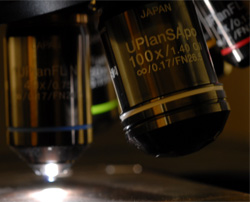
Researchers at The Brain Observatory designed and built new microscopes and imaging technologies to make the process work.
Of course technology is just a means to an end: The goal is boosting knowledge of how the human brain is wired and how disease and aging act upon it, then using that information to improve medical treatments and the lives of the patients.
That demands more than technology; it requires first and foremost the generous participation of brain donors, both those whose brains are referred to the library by their families after they have passed and those who support and sustain the project by becoming active research participants, eager to advance and celebrate science with their life experiences.
Unlike H.M. and other notable neuropsychological cases that have been referred by doctors nationwide, the vast majority of UCSD Digital Brain Library donors will be ordinary people.
Brain donation is a sensitive and generally not-well-understood subject. Nonetheless, the San Diego community has responded quite positively to this initiative. Several local donors have already willed their brains to the library.
Bette Ferguson is a 92-year-old, no-nonsense, straight-talking woman who says she’s in no particular hurry to part with her brain. But she has agreed to donate it to the Brain Observatory when the appropriate moment arrives. “Seems like the best thing to do, letting people get some use out of it after I’m done with it,” she said.
Others, like Renae Farley, are participating for specific reasons. Farley’s sister, Diane, died in 2010 of early-onset Alzheimer’s disease. She was 56. In her last months, Renae and Diane talked about the agonizing struggle to find effective treatments—let alone a cure—for Alzheimer’s. Diane wanted her case to help others, to not be for naught.
Diane’s brain is now part of The Brain Observatory—and just as important, so too is her story. For the last six years of her life, Renae documented her sister’s struggles with first identifying her long-mysterious affliction, and then the various, futile attempts to treat it. All of it has become part of Diane’s neurological portrait.
“I like the idea of sharing Diane with the world,” said Renae.“What she was like. What she did. I like thinking that she might still be able to help others. She would too.”
The Brain Observatory is currently collaborating with local donors or their families to produce the first series of cases that will offer truly holistic representations of different brain conditions.
Some donors suffered from neurological diseases like Alzheimer’s and Parkinson’s, but others enjoyed apparent good brain health up until the day they passed. Neurologically healthy individuals are equally interesting and informative. They provide context and a basis for making comparison with disease states. What should a normal brain look like at age 50 or 80? The Digital Brain Library will provide these answers.
The Digital Brain Library is bound to bring together scholars and professionals from diverse fields and disciplines, and in the arts and sciences. The long-term effect is also likely to be a greater awareness in society of the fascinating interplay between mind and matter that occurs in every second of our lives.
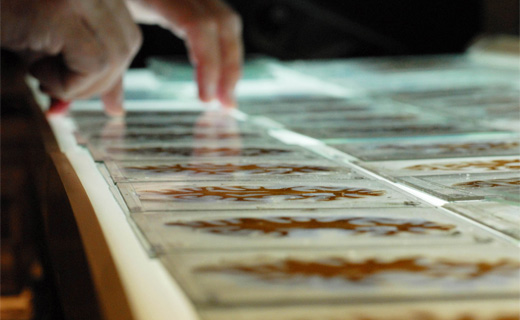
The final product isn't just a series of slides, but a "neurological portrait" that describes not just the brain, but its owner too.

|